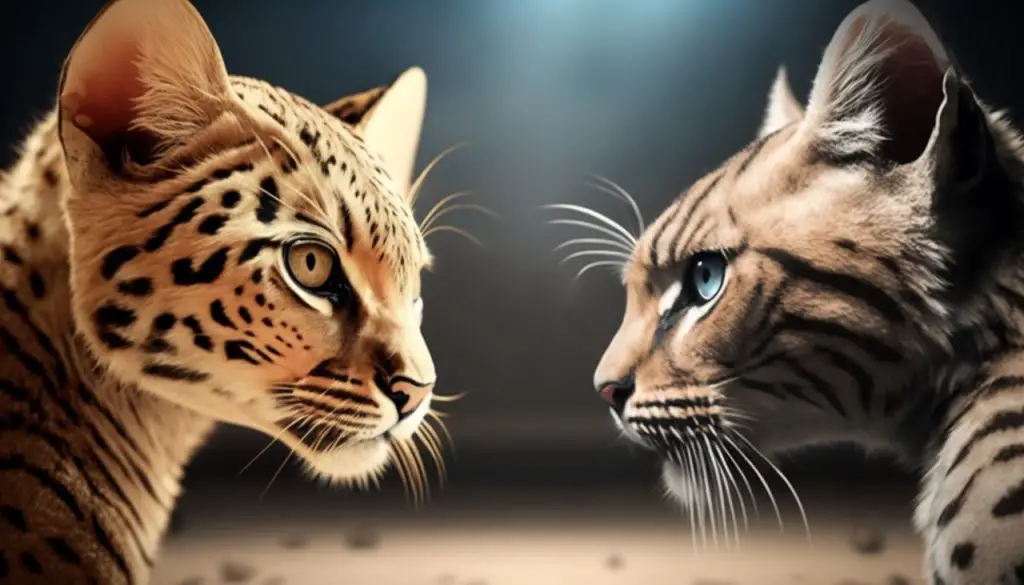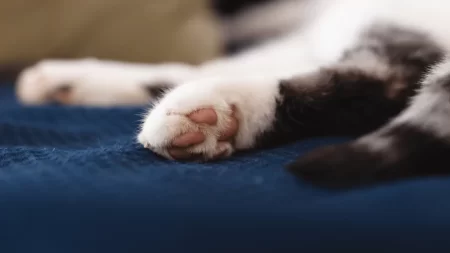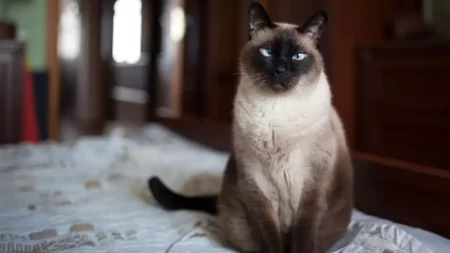Curious about an exotic new kitty? Bengal and Savannah cats could be the perfect fit – but how to choose? Let’s compare the two breeds. We’ll look at their unique features and help you decide which one’s best for your home.
Bengals and Savannahs are two popular hybrid cats that have become increasingly popular. They may look similar but are from two different family backgrounds. Bengals come from a domestic cat and an Asian leopard cat. And, Savannahs are from a domestic cat and an African serval.
The cats have their own unique characteristics, personalities, traits, and care needs. We explore the differences and similarities between them. And, discuss the pros and cons of each breed to help you decide which is best for you.
Bengal Cat Physical Characteristics
| Height | 14-16 inches |
| Weight | 10-15 pounds |
| Coat | Short and dense with rosettes or spots |
| Temperament | Active, playful, curious, and intelligent |
| Lifespan | 12-16 years |
| Family-friendly | Yes |
| Pet-friendly | Yes |
The Bengal and Savannah cat breeds look similar, but there are differences. Both have athletic, toned bodies and muscular legs. Their fur is exotic and wild-like, with vivid markings.
Bengal cats have soft, short fur with spot or rosette patterns. Colors range from dark brown to black. They also have ‘mascara-style’ stripes around the eyes and faint vertical lines on the head.
Savannah Cat Physical Characteristics
| Height | 17-19 inches |
| Weight | 15-25 pounds |
| Coat | Short and dense with spots or horizontal lines |
| Temperament | Paired, curious, and intelligent |
| Lifespan | 12-20 years |
| Family-friendly | Yes |
| Pet-friendly | Yes |
Savannah cats have longer fur, in shades of reddish-brown. They have spots on their head and shoulders. These cats are tall and agile, like their African Serval ancestors.
These cats are popular companions because they are playful and intelligent. They are loving and adaptable, like regular housecats.
Temperament
Bengal and Savannah cats have fascinating personalities and temperaments. Bengals are described as inquisitive and headstrong, while Savannahs are loyal, friendly, and energetic. Both cat breeds have their own traits, plus some from their wild heritage.
The Bengals are patient and intelligent. This makes them easy to train. They also do well in animal-assisted therapy, like nursing homes. Savannahs, on the other hand, are social and love people. Plus, they love playing fetch! Both breeds need stimulation and make excellent pets.
Bengals like snuggling with their owners, while Savannahs keep their distance but stay close. Both can be trained, though they may still have wild behaviors from their wildcat roots.
Health & Lifespan
The Bengal and Savannah cats’ unique physical characteristics and personality traits make them popular pets. They have strong immunity and longer life than many other cats. These cats stay active into their older years since they are healthy with no known health issues or allergies.
The Bengal lives an average of 12-16 years and the Savannah lives an average of 12-20 years. This is due to their fast metabolism which helps combat obesity. But, both need quality diets and mental stimulation to stay healthy. Exercise is essential too since they are intelligent and active cats. They should play interactive games like fetch and chase toys with lasers.
Check for early illnesses like ear mites or infections. Monitor organ impairments to identify any potential issues before they worsen. Regular visits to the veterinarian ensure optimal health and a long life full of love and happiness for your pets!
Diet & Nutrition
A cat’s diet is essential for its health. Bengal and Savannah cats have both similar and different dietary needs.
- Similarities: Both require a balanced diet of proteins, carbs, fats, minerals, and vitamins. A good-quality dry food should be the basis, supplemented with wet foods that offer essential fatty acids for a healthy coat.
- Differences: Bengals may need more protein due to their active lifestyle, while Savannahs may need more calories because of their size.
Best Diet: Age-appropriate, high-quality pet food should be fed. Fresh water should be available for hydration.
Grooming & Maintenance
Bengal and Savannah cats have different grooming and maintenance needs. Bengals have thicker fur, so require more frequent brushing to avoid matting. Savannahs have shorter hair and need less frequent brushing, but regular checks for fleas and parasites are necessary.
- Baths may be needed for Savannahs once a week, but not for Bengals as they are capable of self-grooming.
- Occasional visits to the groomer for nail trims, ear cleaning, and face trims are beneficial for both breeds.
Cost & Availability
Bengals and Savannahs cost more than other cats. They are not easy to find. You can look for a specialized breeder to find one. Savannah kittens typically cost between $1000 and $5000, while Bengal kittens usually range from $500 to $1500 in price.
These cats may be pricey, but they can be loyal companions. Bengal and Savannah owners report that their cats can act like dogs – they follow them around!
Best for Your Home
Choosing a pet for your home can be tough. Bengal and Savannah cats have many similarities and differences. Both breeds have a wild, exotic look but can be loyal and loving pets. Do you want an active companion or a laid-back lap cat?
- Bengal cats are best for homes with outdoor spaces like yards or balconies. Bengal cats need attention and stimulation. They’re intelligent and active.
- Savannah cats don’t need as much attention. They like plenty of time outside exploring. Even if you don’t have an outdoor space, they can do well with enriching toys. Savannahs bond strongly with their owners but don’t demand attention.
Think about your lifestyle when you choose a cat breed. If you don’t have time for an active companion, get a more laid-back feline like a Savannah. Both types of cats make great companions. Knowing which one is best for your home is key for cuddles!







